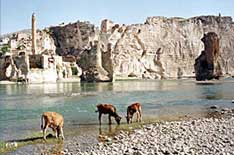The Ilisu Hydroelectric Project would create the largest dam in Turkey and a reservoir 125 square miles in size. Located in the southeastern corner of the Anatolian peninsula on the Tigris River, the project has been handicapped by uncertain financial support and mired in international criticism about its impact on the region’s environment, culture, and Kurdish population.
The Economics
Final designs for the $1.5 billion Ilisu Hydroelectric Project were completed in 1982, but in the last several years the dam has had trouble securing financial backing, throwing its future in jeopardy. The Swedish construction firm Skanska backed out of the project in 2000, and in November 2001, the British engineering firm Balfour Beatty and its Italian civil engineering partner, Impregilo, withdrew from the project claiming there were irresolvable differences over commercial, environmental, and social aspects of the project. Currently, construction plans for the dam remain on hold.
Human Displacement
A 1999 report commissioned by the British government projects the Ilisu dam would affect 36,000 people, but some estimates suggest as many as 80,000 people would be impacted. Moreover, most of the inhabitants of the area are Kurdish, and dam opponents have gone so far as to imply that Ilisu is a plan by the Turkish government to ethnically cleanse the area of Kurds. Earlier dam projects in the region have a poor track record of satisfactorily resettling the displaced, critics say. In April 2000, Balfour Beatty stated that the Turkish government was implementing a program to provide the affected citizens with a number of compensation and relocation options; critics say that the government has not yet been in touch with anyone in the area about compensation or relocation. The Turkish government claims the dam is necessary to promote economic power, jobs, and economic progress in the area.
Environmental Concerns
Major Turkish cities on the Tigris such as Diyarbakir, Batman, and Siirt regularly dump solid waste and wastewater into the Tigris River. Once the dam is in place, the river will be even less effective in washing away these pollutants. Dam proponents claim new sewage plants will be built upstream to offset such pollution. Environmentalists suggest that the restricted flow of the river will result in erosion downstream; furthermore, they say, the dam will prevent the seasonal flooding downstream upon which local ecosystems depend. There are also concerns that the reservoir will create optimal conditions for the breeding of insects that spread diseases like malaria and Leishmaniasis, a condition that results in scabs and fever and is transmitted by sand flies.
Cultural Heritage Impact
The flooding that would follow construction of the Ilisu dam would destroy some of Turkey’s most ancient archeological sites, including the 2,000-year-old city of Hasankeyf. Dam supporters point out that Hasankeyf consists of upper and lower towns, and that only the lower settlement will be completely submerged by the flooding. They also insist that material of historical value will be salvaged from the lower town before it is flooded — and a number of archeologists are indeed working to recover artifacts from the area.
Political Implications
There are concerns that the Ilisu dam would restrict the flow of the Tigris into Syria and Iraq, a tense issue in a region short on water, and part of the greater debate on international waterway rights. Balfour Beatty, a former project participant, has argued that the dam will actually double the amount of water available to countries downstream by equalizing the river’s water flow.
- Previous: China
- Next: Lesotho/South Africa




